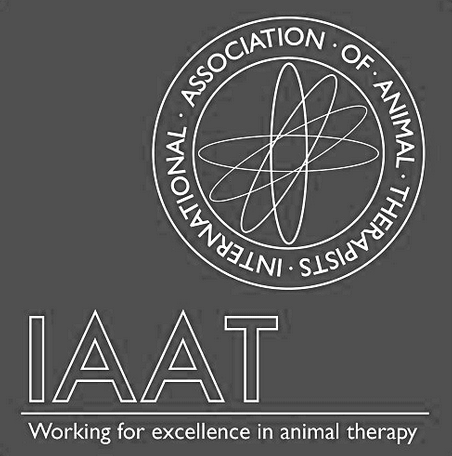I visit the horse at home and on site, to meet the owners needs and to assess not just the animal, but also the environment where the patient lives.
After collecting information of the horse’s case detailed history*, the patient is thoroughly assessed through a static assessment, a dynamic assessment and a manual body examination to establish body condition, overall muscular quality, joints range of motion, presence of pain or discomfort.
A comprehensive clinical history is recorded for each horse, including details on work routine, management, nutrition, past injuries, surgeries, or medical conditions. It also covers recent veterinary visits, deworming, vaccinations, dental and farrier care, as well as the condition and fit of essential equipment such as the saddle and bridle. If necessary, I will also obtain veterinary consent to ensure the best course of treatment.
After every physiotherapy session, you’ll receive a detailed written report about your horse.
This report keeps track of their progress, including what we found during the assessment, the treatments applied, and recommendations for ongoing care. It’s a useful reference for you and can also be shared with your vet, farrier, trainer, or nutritionist to ensure everyone involved in your horse’s care is on the same page.
Keeping these records helps monitor improvements, guide future treatments, and support your horse’s health, performance, and recovery.
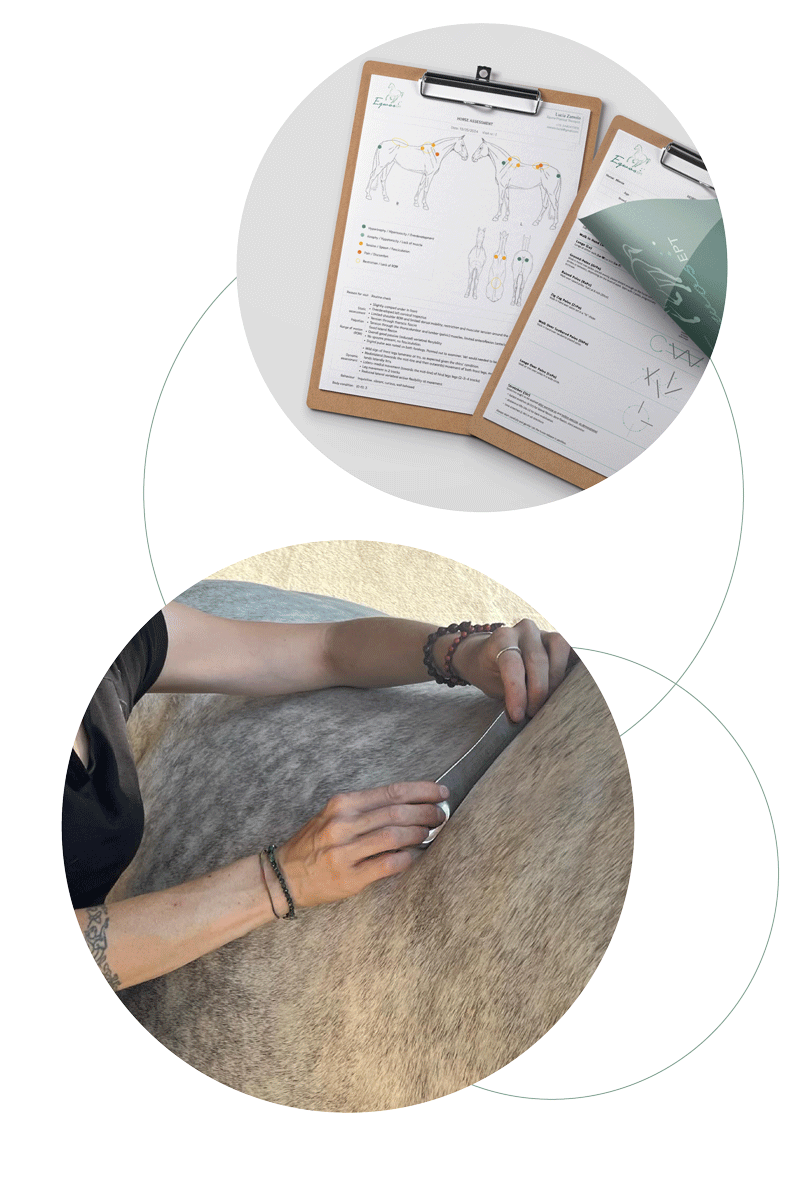
I use a variety of manual massage techniques, including sports massages and relaxing massages, as well as post-trauma and post-surgery treatments. These methods, combined with soft tissue mobilizations and trigger point therapy, help alleviate pain, reduce tension, and promote recovery.
Kinesiology tape is applied to support muscle function, enhance circulation, and promote lymphatic drainage. This therapy aids in the recovery process by reducing swelling, improving posture, and supporting movement, all while allowing the skin to breathe and muscles to function freely. I’m a certified RockDoc for the equine.
Using manual techniques and blade-assisted methods, MFR targets fascial adhesions, nerve impingements, and contractures. This treatment follows the myofascial kinetic lines to restore balance, symmetry, and mobility, enhancing flexibility and relieving discomfort in the horse’s body.
I use specific gentle manual techniques to release nerve impingements, addressing areas where nerves become trapped or compressed. This treatment helps restore normal nerve function, reduce pain, and improve mobility by alleviating pressure on affected nerves.
I incorporate passive stretching techniques to release muscular tension and improve flexibility. These exercises promote relaxation and elongation of muscles, helping horses regain full range of motion and alleviate discomfort.
Manual passive joint mobilizations are used to improve joint function and reduce stiffness. Techniques such as vertebral and articular joint mobilizations help increase mobility, reduce pain, and enhance overall movement by addressing restrictions within the joints.
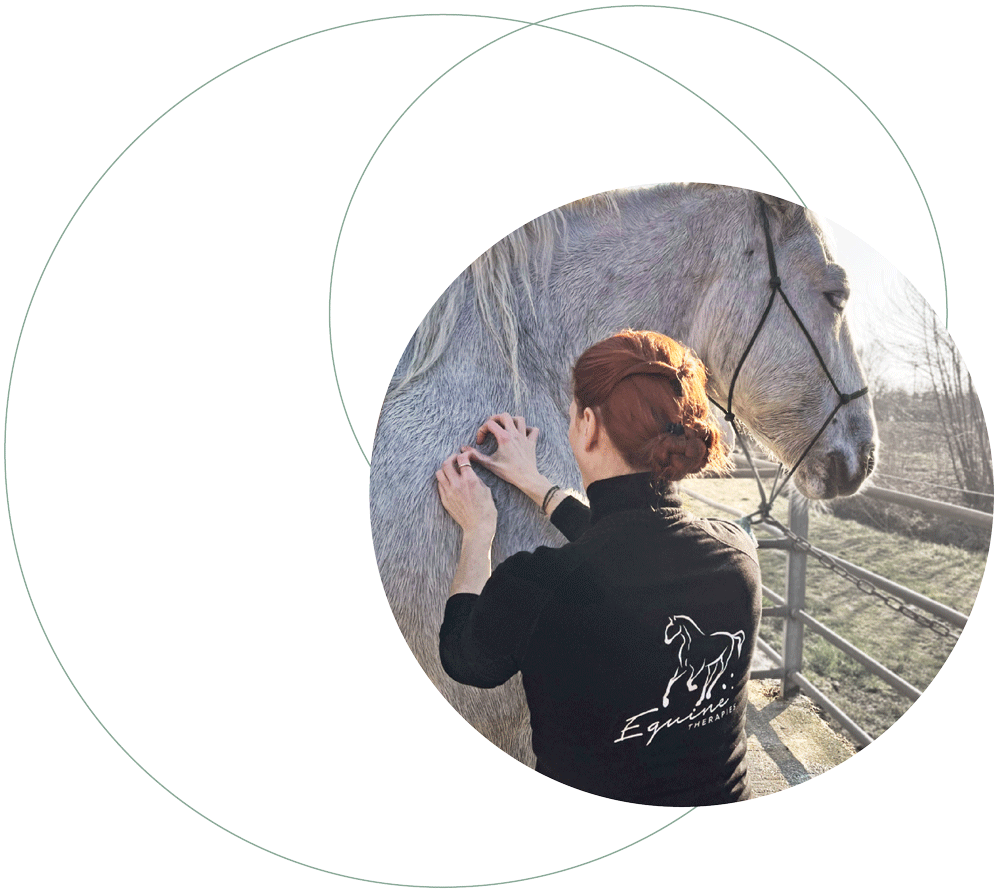
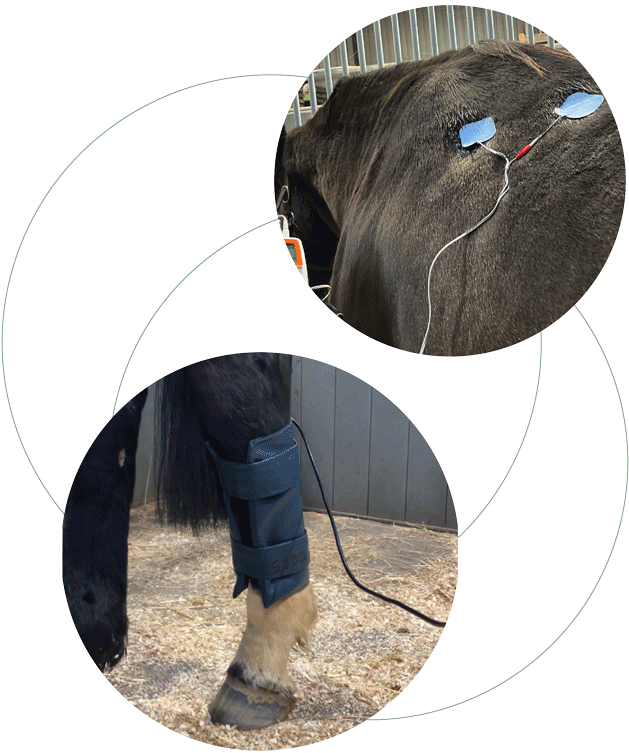
Working with BAC Technology low-intensity ultrasound to promote healing in muscles, tendons, ligaments, and joints. Ultrasound helps reduce inflammation, improve circulation, and stimulate tissue repair. It’s a gentle, non-invasive treatment ideal for managing both acute injuries and chronic conditions in horses, supporting recovery without discomfort.
LASER is a modality used to support healing and reduce inflammation. In horses, it helps manage soft tissue injuries, joint pain, and wounds by improving circulation and stimulating tissue repair. The treatment is non-invasive, safe and painless, making it ideal for both acute and chronic conditions without the need for sedation. It will require veterinary consent.
PEMF therapy delivers gentle electromagnetic pulses that stimulate cellular repair, reduce inflammation, and enhance circulation. PEMF is particularly useful for managing musculoskeletal pain, tendon or ligament injuries, and promoting overall tissue health.
This modality uses electrical soft tissues stimulation to reactivate atrophied or hypotonic muscles, and increase strength and range of motion. I use NMES to activate and strengthen specific muscle groups in horses through gentle electrical impulses, as it helps improve muscle tone, prevent atrophy during rest periods, and support neuromuscular re-education.
This modality stimulates nerves for the temporary treatment of painful conditions to manage painful areas in the horse’s body. It’s particularly helpful for relieving discomfort associated with chronic conditions, injury recovery, or post-exercise soreness.
A range of thermal therapies are tailored to reduce oedema and inflammation or soothe stiff muscles, depending on the patient’s condition.
Movement therapy consists of a detailed plan including a mix of specific exercises and different surface tracks, carefully planned depending on the horse’s physical condition and needs. These exercises progressively enhance the horse’s balance, coordination, strength, and overall movement efficiency, fostering better performance and reducing the risk of injury.
This modality uses specific exercises, tools or objects, such as elastic bands, treats or polework designs, to encourage the horse to actively stretch and engage targeted muscle groups. It helps improve flexibility, muscle activation, and coordination, promoting better mobility and muscle development.
Active joint mobilizations involve movements that encourage the horse to perform certain actions, stimulating joints and increasing their range of motion. This technique enhances joint flexibility and overall mobility, supporting the horse’s ability to move freely and comfortably.
Performance training requires proper progressive physical adaptation. I design specific science-based plans for targeted movement exercises that help to condition the horse’s body for peak performance. By incorporating controlled exercises into the training, the plan will help to improve flexibility, strength, and coordination, while supporting injury prevention and enhancing the horse’s ability to perform at its best during training and competition.
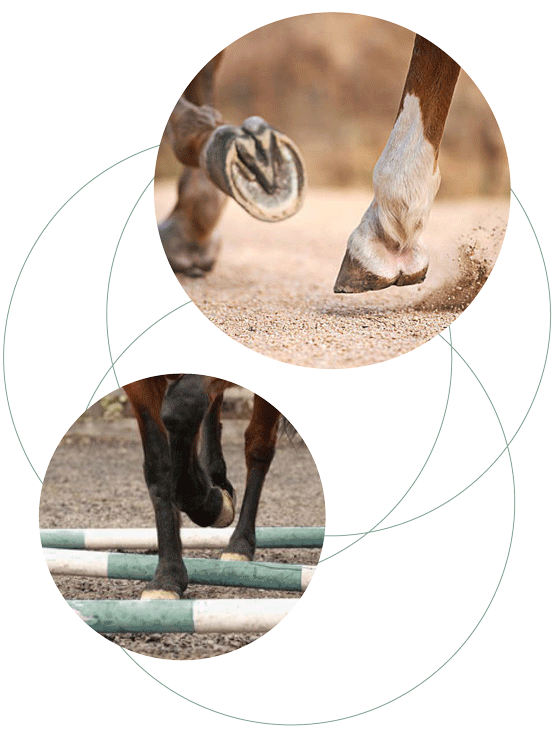
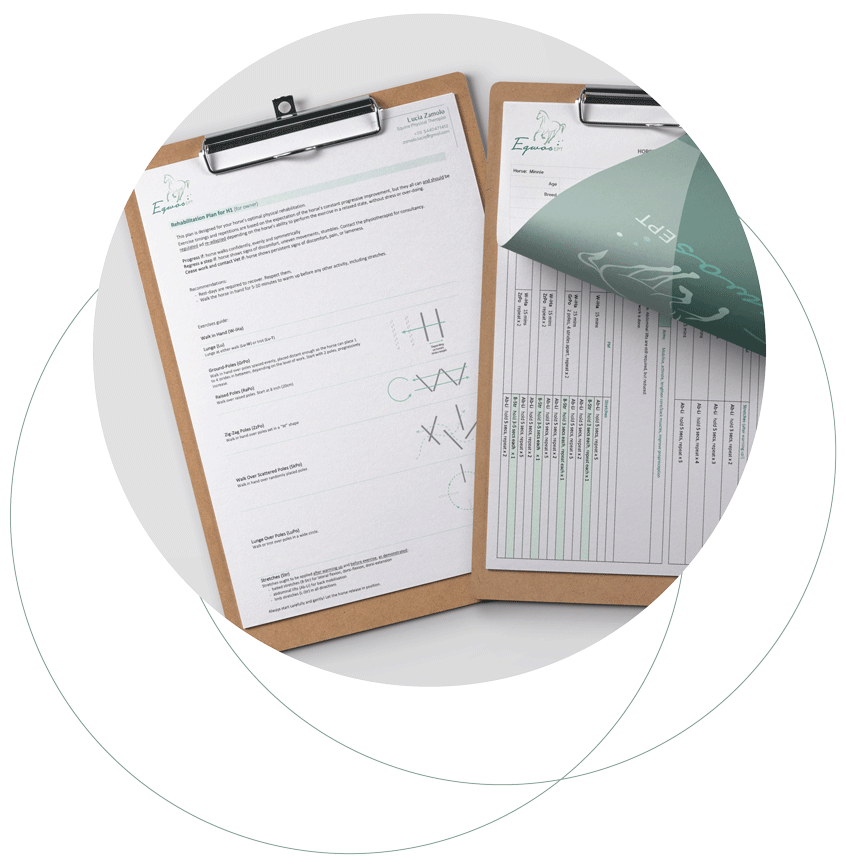
Equine physiotherapy rehabilitation plans are customised to address the horse’s specific condition, age, and progress throughout recovery.
Suitable for horses of all ages, including young and retired horses, as well as a variety of musculoskeletal disorders, these plans are designed to support the horse’s physical recovery, wether it is a case of going back to work after a long period of rest, post-surgery recovery, post-trauma recovery, or other therapeutic needs due to a specific pathology (e.g., kissing spines or tendon injury).
Developed in close collaboration with the owner and the horse’s veterinary surgeon, the plan considers both the horse’s needs and the owner’s goals to promote optimal recovery, ensure long-lasting results, and improve overall well-being.
Rehabilitation plans can range from a few weeks to several months, adapting as the horse progresses to ensure the best possible outcome for both the horse and the owner.
The rehabilitation programs are always interspaced with on-site regular physiotherapy visits that have the purpose to re-assess the horse’s physical state to establish proper progress. These sessions also include manual therapy and electrotherapy, when and if necessary, to ensure the treatment of any possible physical alterations due to compensatory patterns that sometimes occour when asymmetries and/or a specific condition is present.
Optimal equine care comes from collaboration. By working alongside veterinarians, farriers, trainers, and owners, I ensure that physiotherapy complements each horse’s overall management. Open communication and shared expertise create the best outcomes, helping every horse perform, recover, and thrive with a tailored, team-based approach.
Equine physiotherapy is most effective when integrated into a well-rounded approach to horse care. While some countries do not regulate veterinary consent for physiotherapy, I tend to follow UK regulations and international best practices, to ensure ethical collaboration with veterinarians.
Under the updated guidelines issued in November 2020, the RCVS clarified in Chapter 19 of the Code of Professional Conduct that musculoskeletal therapists can provide maintenance treatments without requiring veterinary referral. However, for horses currently receiving veterinary care for an ongoing condition or injury, consent from the attending veterinarian is still necessary before physiotherapy can begin.
If this is your case, I will kindly request veterinary consent before starting treatment. This ensures the best care for your horse and encourages open communication between physiotherapists and veterinarians, working together towards the same goal.
If veterinary consent is needed for your horse, I will supply the appropriate forms and assist you in the process to ensure a smooth and professional collaboration.
My priority is your horse’s well-being. This is why I always aim to work with veterinary expertise to achieve the best possible results.
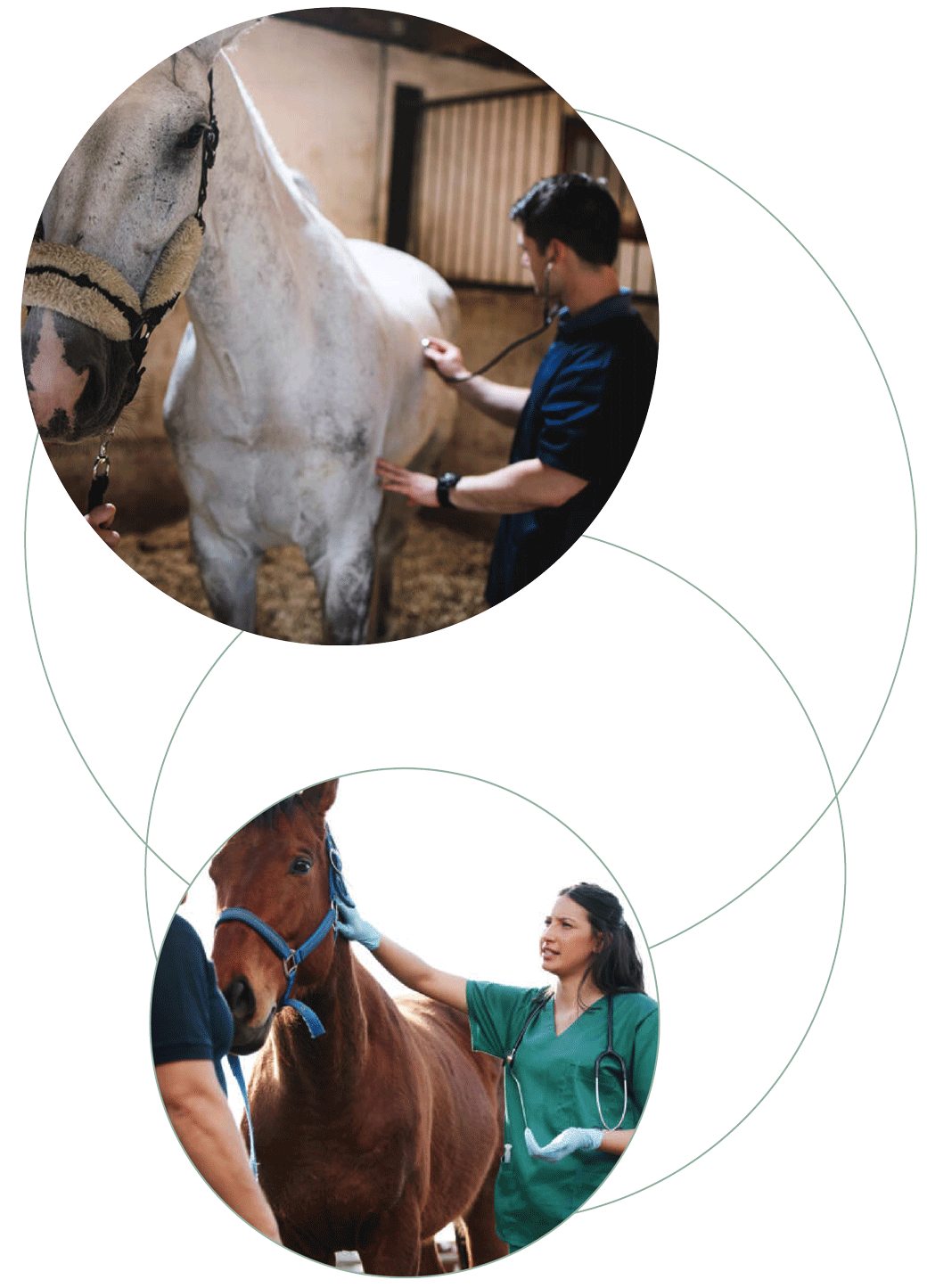
Equine Physiotherapist
